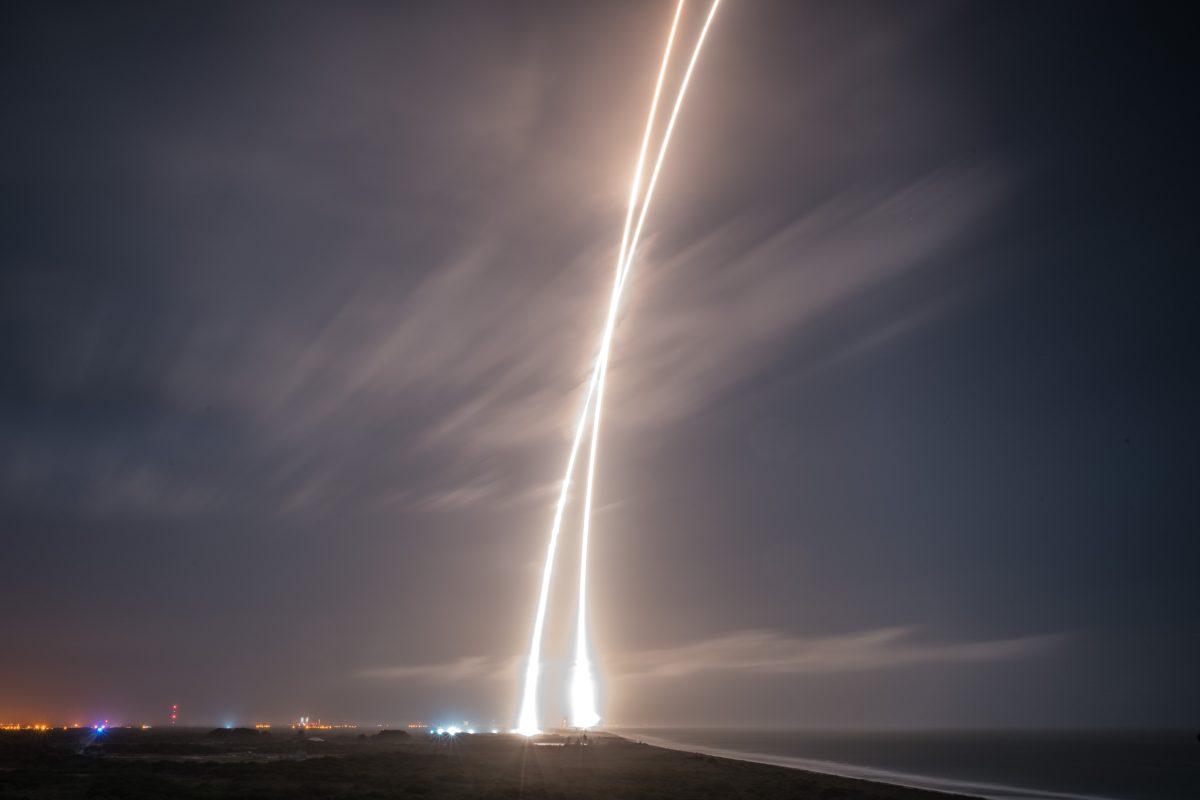SpaceX’s most recent rocket-launch failure has triggered excitement in the aerospace community.
Aerospace manufacturer SpaceX revolutionized the space industry by successfully launching and landing a rocket last December in Cape Canaveral, Florida. Last Sunday, SpaceX nearly had another groundbreaking landing, but a strut on the base of the rocket failed to fully deploy, causing the rocket to tip over and explode moments after it touched down.
The attempts, however, have already peaked the interest of the aerospace industry — if SpaceX is able to perfect its re-landing technology, it could mean cheaper access to space.
David Kanipe, an assistant professor in the Department of Aerospace Engineering, said SpaceX’s work is a huge achievement and is a turning point in rocket technology.
“It has a lot of implications and this is an accomplishment because you do not have to build a new booster, just refurbish the old one,” Kanipe said. “They deserve a lot of credit for that because it is not an easy thing to do — to guide it down backwards like that.”
If SpaceX perfects their landings, it will significantly decrease the overall cost of launching payloads into orbit. As scientists develop this new technology, the rocket itself will break down over time. Kanipe said it is important to keep the rocket safe and up to standards as they continue to reuse the hardware.
“You do need to check it because vibration and wear could loosen some things up and create long-term issues,” Kanipe said. “You have to check it out and must have a procedure in place to check the lines, connections and software. At the same time, that is a miniscule time and effort compared to building a entire new booster.”
Kanipe said the technology needs more experimentation to increase the chances of a successful landing.
“I think people know how to do it,” Kanipe said. “Now you need to make it work multiple times — it has to become 99 or 98 out of 100 times or something near that.”
Alexander Pages, an aerospace engineering senior on the Texas A&M Sounding Rocketry Team, said now that people know it is possible to land and reuse rockets, more industries will get involved.
“It’s a really cool thing, and they are moving the industry forward,” Pages said. “There are a lot of other companies trying to keep up with SpaceX. Once someone creates that technology, someone can copy that or use a very similar approach.”
With the idea of reusable rockets, Pages said long-term travel in space could become a reality — but not any time soon.
“In my opinion, [space travel is] still a little bit further down the road but it’s a huge step towards that,” Pages said. “If the cost is enough for people to go, I think more and more people are willing to go.”
Elon Musk, CEO and CTO of SpaceX, and SpaceX are pursuing human travel to Mars as a long term goal. Farid Saemi, aerospace engineering senior and president of American Institute of Aeronautics and Astronautics, said reusable rockets may not be the solution for traveling to Mars, but are definitely a big start.
“SpaceX has pushed other companies to look at reusable rocket technologies,” Saemi said. “As that’s going to be a big plus for the industry. Reusable rockets will not help take us to Mars, but will help us setup the infrastructure that will take us to Mars.”
Failure launches industry forward
January 20, 2016
Photo by Provided
SpaceX successfully relanded the stage one of their Falcon 9 rocket on land Dec. 21, 2015, pictured here in a long-exposure launch and relanding streak. An attempt to replicate the historic feat at sea failed Sunday however.
0
Donate to The Battalion
$1865
$5000
Contributed
Our Goal
Your donation will support the student journalists of Texas A&M University - College Station. Your contribution will allow us to purchase equipment and cover our annual website hosting costs, in addition to paying freelance staffers for their work, travel costs for coverage and more!
More to Discover










